2018
20 copies
Signed and numbered
20 copies
Signed and numbered
32×24 cm
12.59×9.44 in.
12.59×9.44 in.
Risograph printing
Blind stamped cover and Slipcase with Atoma rings
Blind stamped cover and Slipcase with Atoma rings

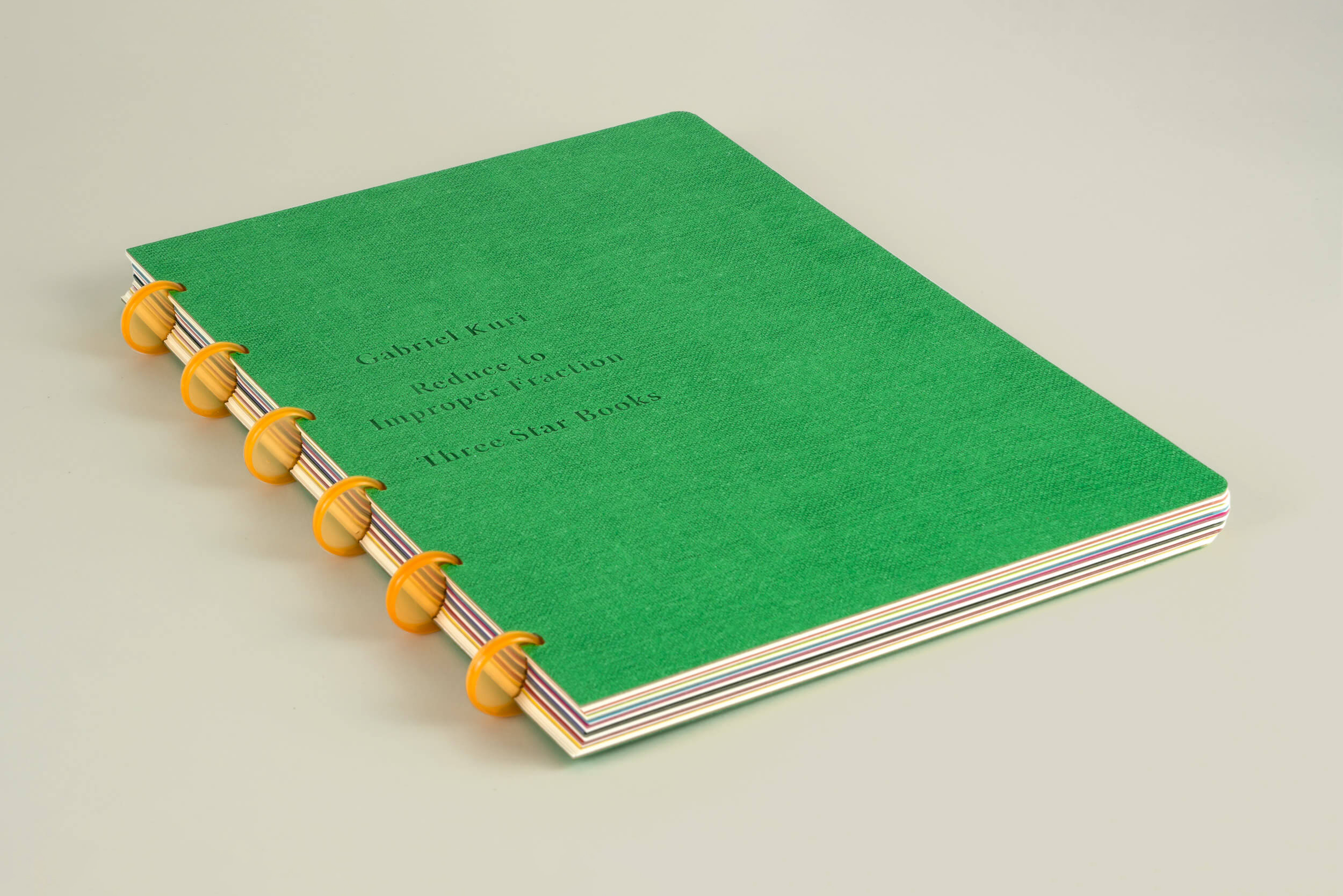













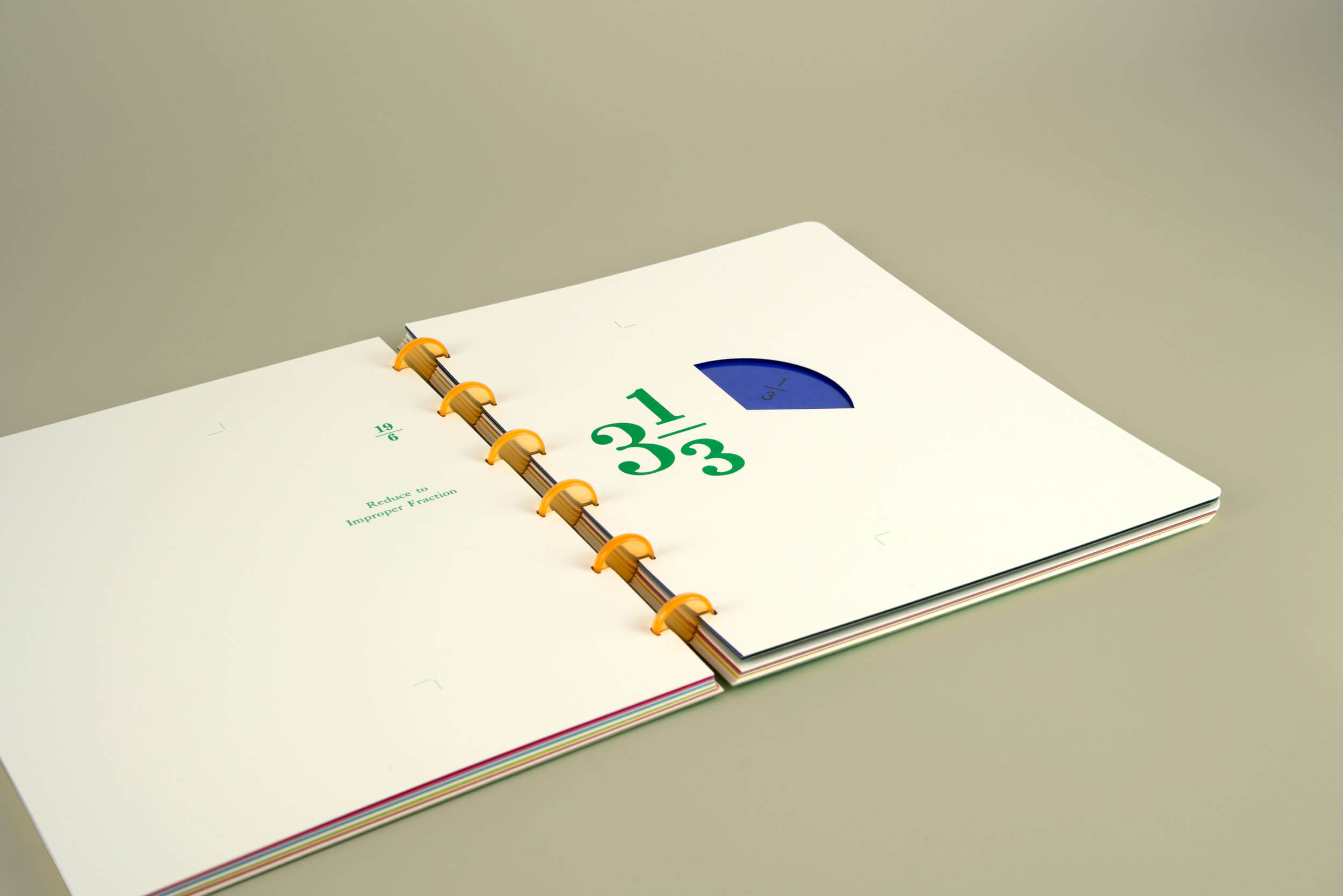


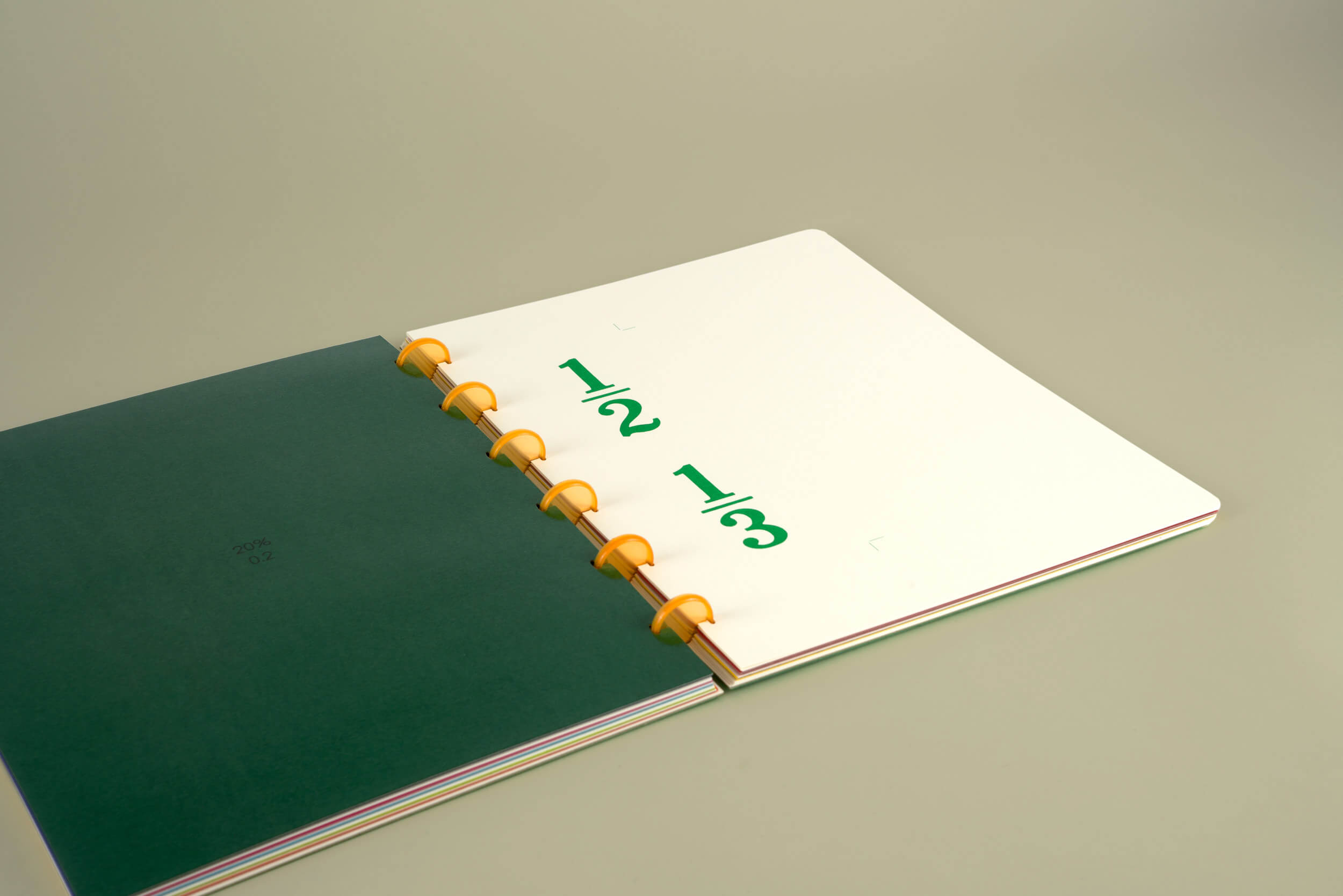





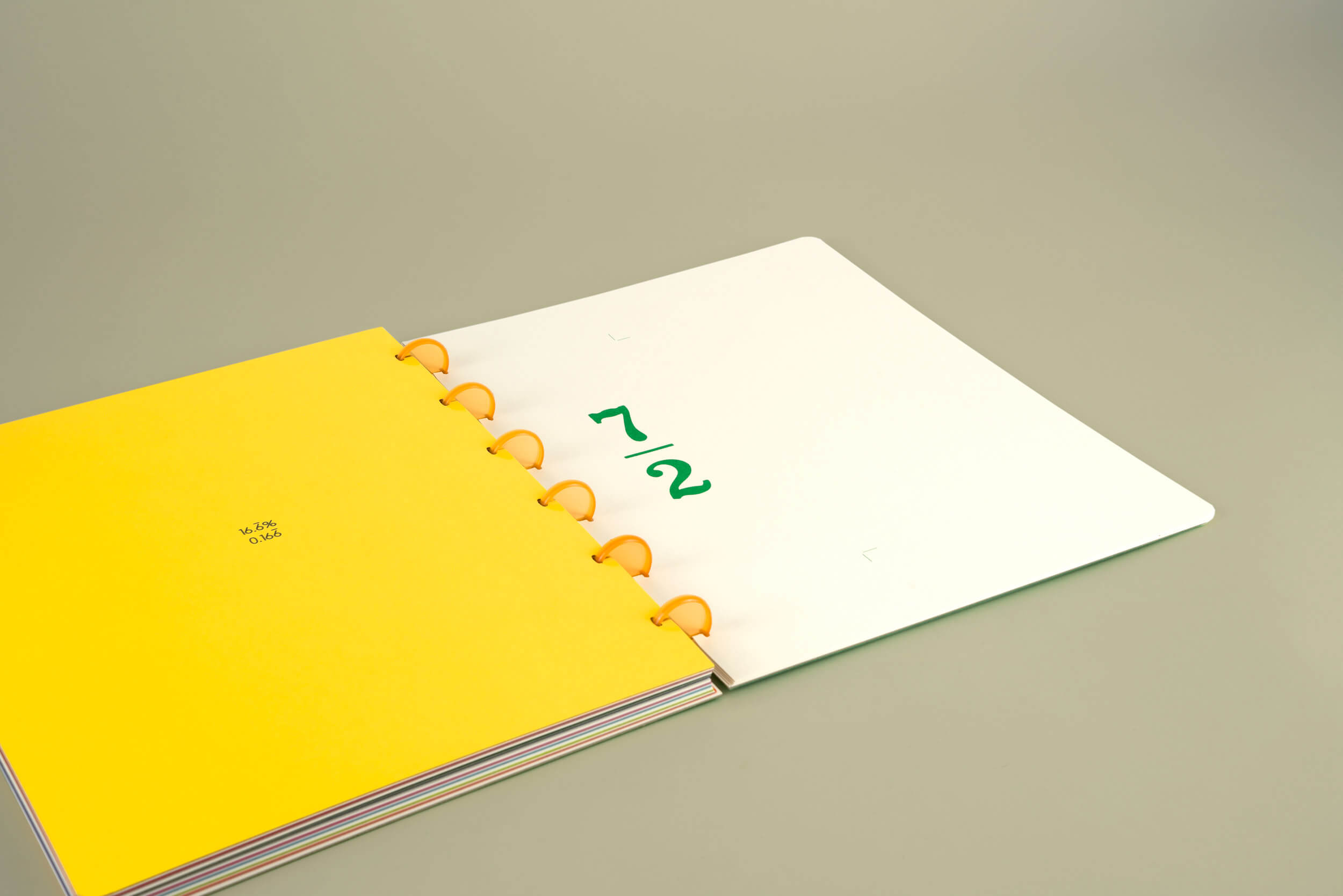




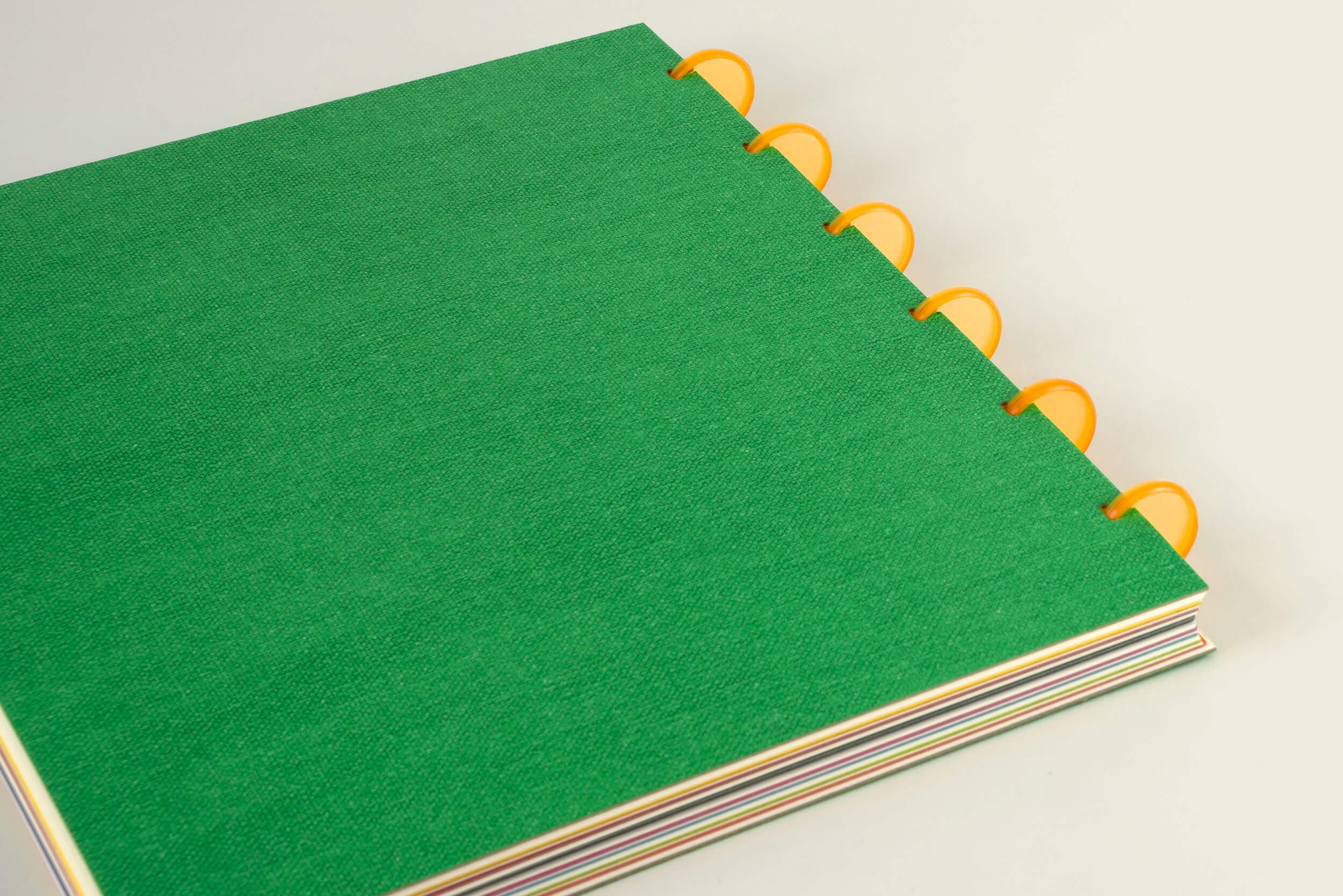




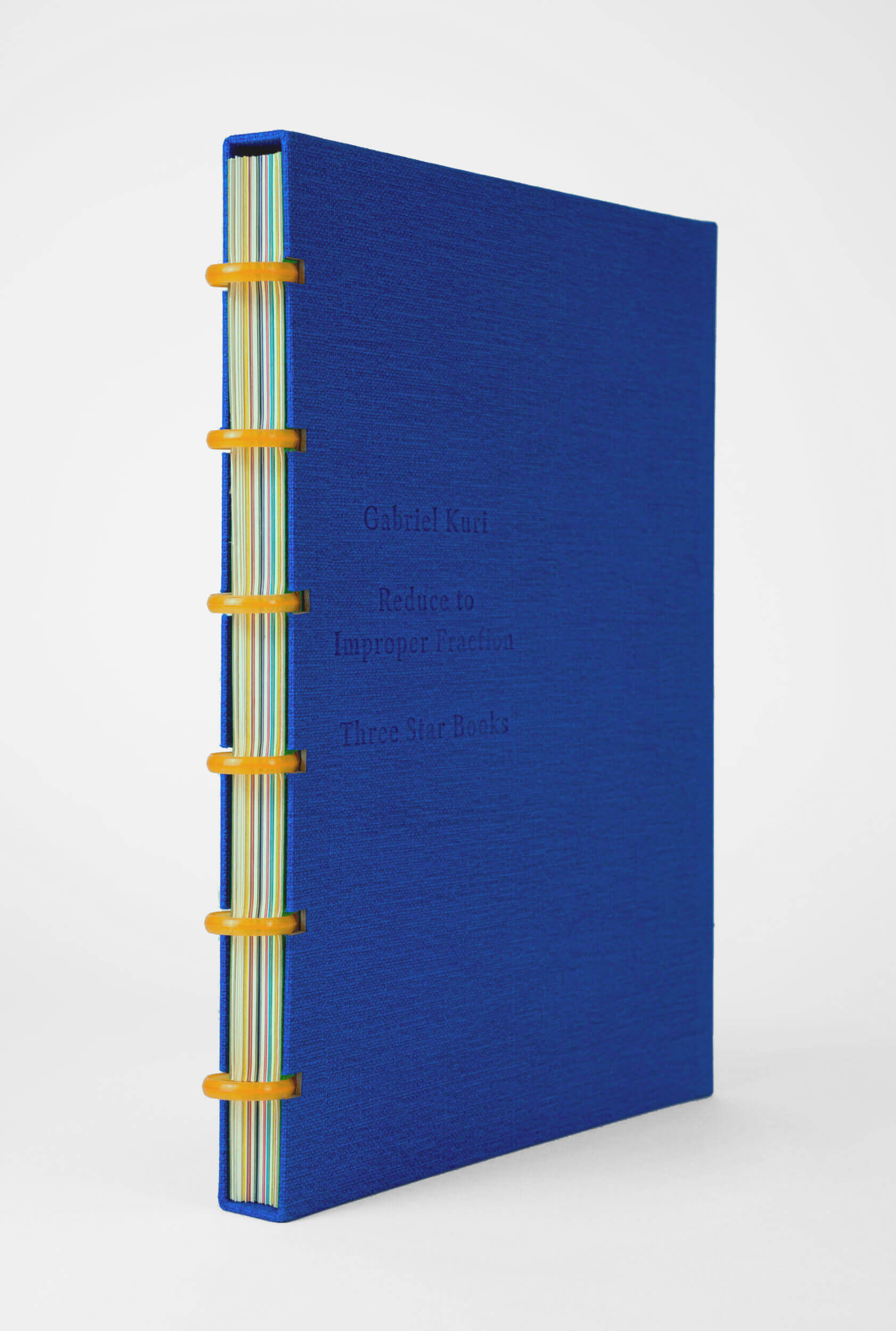


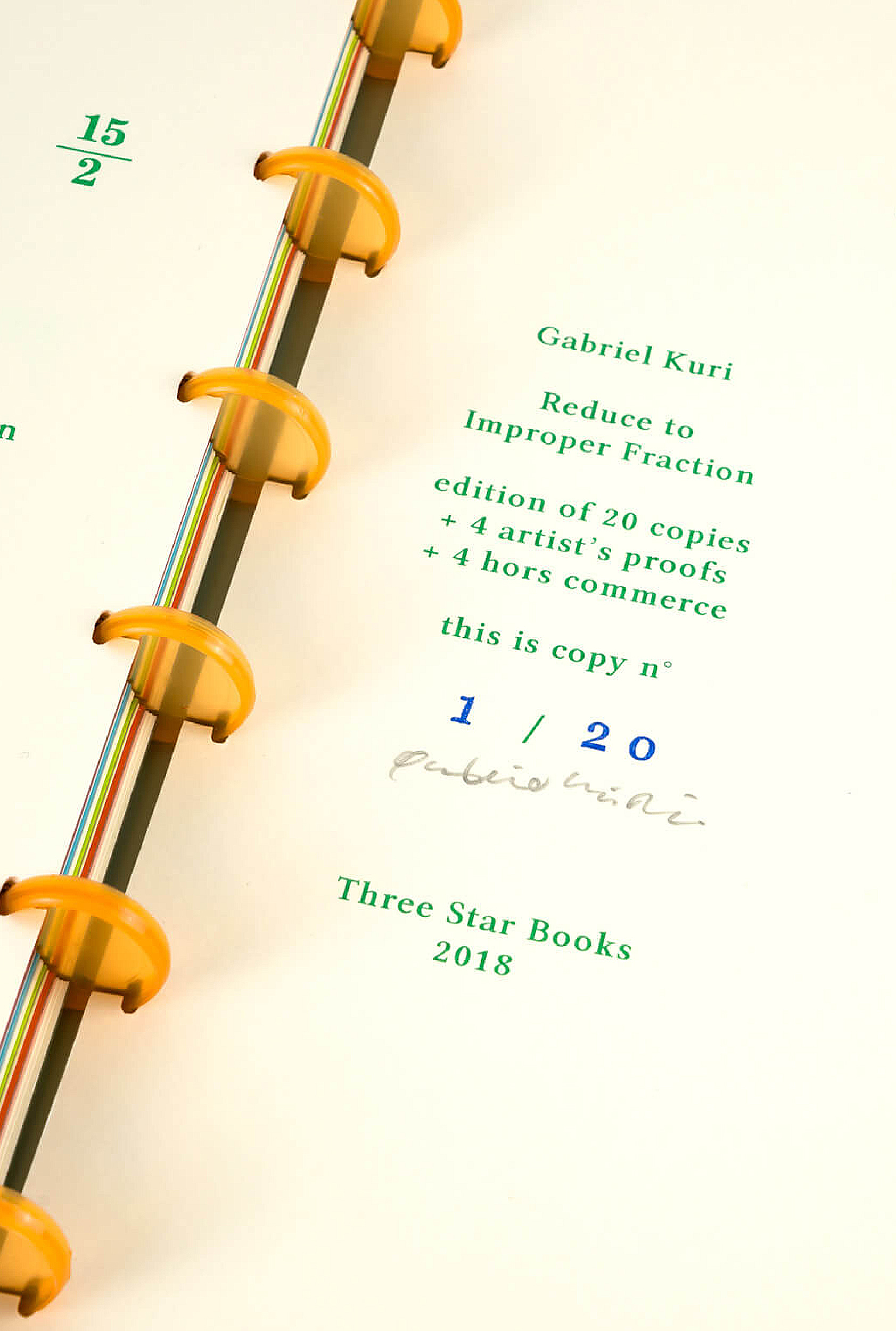
Following the artist’s interest in numbers, mathematical interpretations of the world, tracking devices and mechanisms that characterize our everyday social lives, Gabriel Kuri has combined two different educational graphic solutions used to teach kids how to master the complex world of fractions - flash cards and cardboard pie charts - in a playful layout of colored pages, die-cut shapes and graphic reproductions printed in vivid green with the unique quality offered by a Risograph (a brand of digital high-volume printing machines manufactured in Japan since 1986 and now mostly used for artistic output).
This book is a foray into the artist’s creative method and an expression of Kuri’s visual language. Like any of the artist's sculptures or installations, “Reduce to Improper Fraction” carries elements defining Kuri’s original formal vocabulary. This book is bound with iconic “Atoma” rings in a candid reference to the artist’s series of large metal sculptures presented at Regen Projects (Los Angeles) in 2014, while the use of “modified readymades” is a recurring motif in Kuri’s artistic practice.
The late James Lee Byars created “The Perfect Smile” (1994) pointing to the elusive and unspeakable beauty of perfection while Gabriel Kuri insists to “Reduce to Improper Fraction”, helping us to see more easily how many whole items we actually have. For both artists it seems that the end game in their works is the same: an attempt to define the convergence of themes that are dear to our states of being.
With this project for Three Star Books Gabriel Kuri demonstrates his ability to elegantly synthesize the complexity of understanding in order to create new paths of apprehension.
Gabriel Kuri’s (b. 1970) work directly engages form and material to explore notions of function, systems of exchange, ordering principles and the coding of direct experience into socially convened protocols. Kuri’s sculpture never dissociates physical properties from their semantic implications, nor entertains a categorical distinction between the natural and manufactured realms. His practice is rooted in first hand physical experience and involves studio based discipline as well as site specific and site responsive modus. The artist’s approach follows a variety of techniques and gestures encompassing the direct forging of materials, collaboration with craftspeople and industrial processes, as well as incorporating ready-made objects in a non hierarchical sculptural investigation.
This book is a foray into the artist’s creative method and an expression of Kuri’s visual language. Like any of the artist's sculptures or installations, “Reduce to Improper Fraction” carries elements defining Kuri’s original formal vocabulary. This book is bound with iconic “Atoma” rings in a candid reference to the artist’s series of large metal sculptures presented at Regen Projects (Los Angeles) in 2014, while the use of “modified readymades” is a recurring motif in Kuri’s artistic practice.
The late James Lee Byars created “The Perfect Smile” (1994) pointing to the elusive and unspeakable beauty of perfection while Gabriel Kuri insists to “Reduce to Improper Fraction”, helping us to see more easily how many whole items we actually have. For both artists it seems that the end game in their works is the same: an attempt to define the convergence of themes that are dear to our states of being.
With this project for Three Star Books Gabriel Kuri demonstrates his ability to elegantly synthesize the complexity of understanding in order to create new paths of apprehension.
Gabriel Kuri’s (b. 1970) work directly engages form and material to explore notions of function, systems of exchange, ordering principles and the coding of direct experience into socially convened protocols. Kuri’s sculpture never dissociates physical properties from their semantic implications, nor entertains a categorical distinction between the natural and manufactured realms. His practice is rooted in first hand physical experience and involves studio based discipline as well as site specific and site responsive modus. The artist’s approach follows a variety of techniques and gestures encompassing the direct forging of materials, collaboration with craftspeople and industrial processes, as well as incorporating ready-made objects in a non hierarchical sculptural investigation.